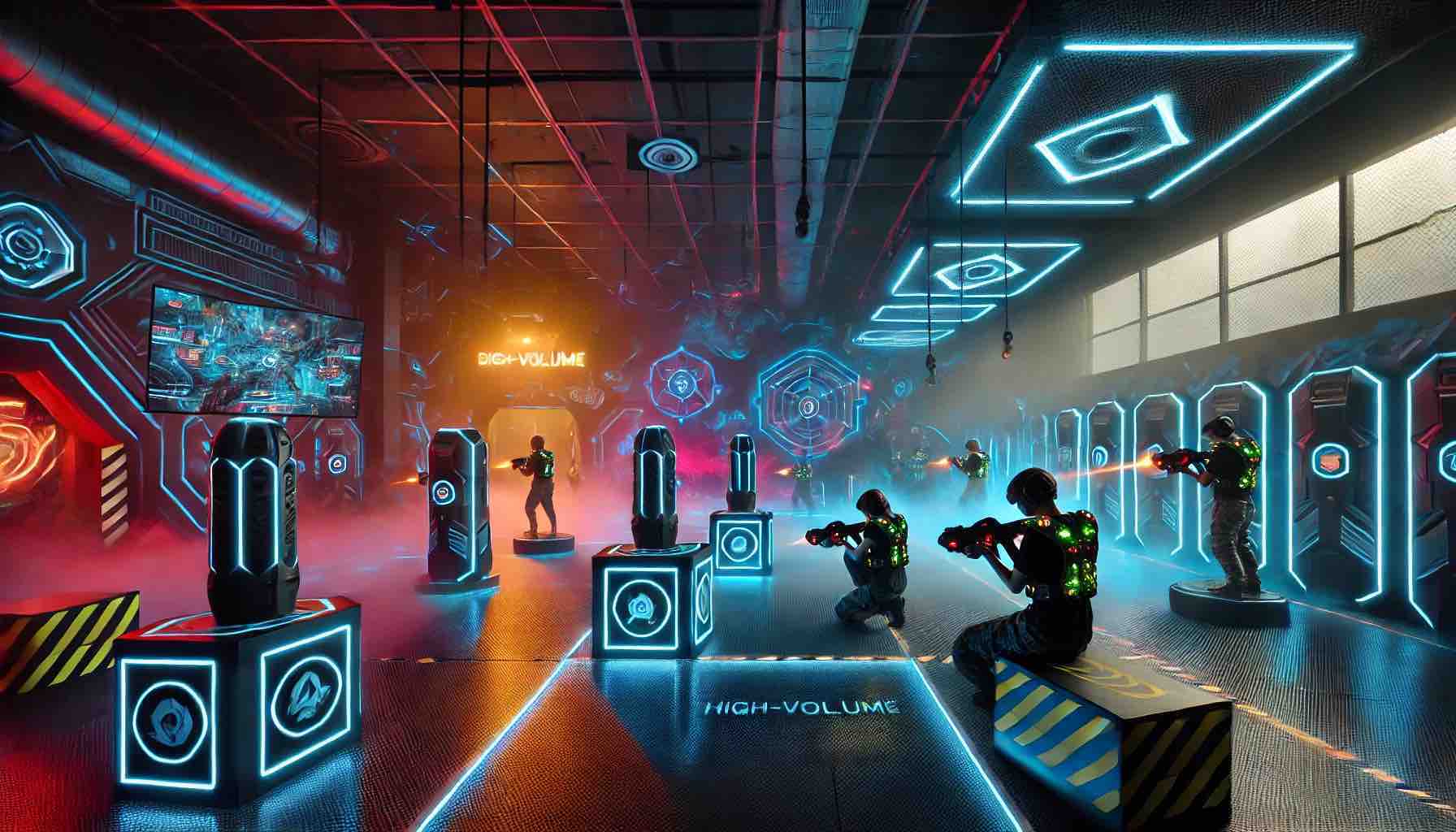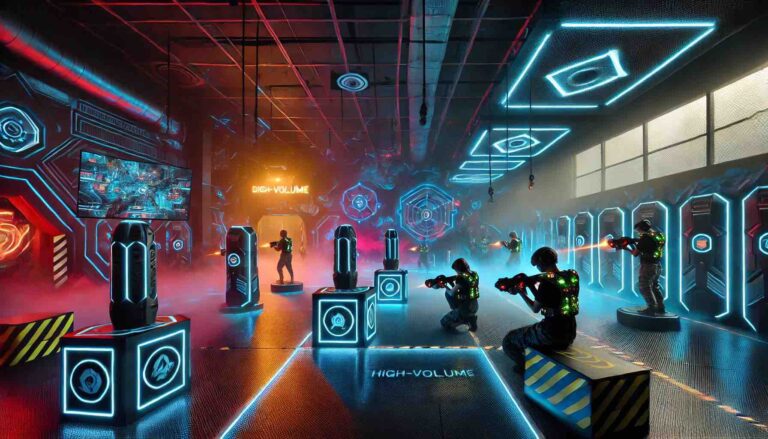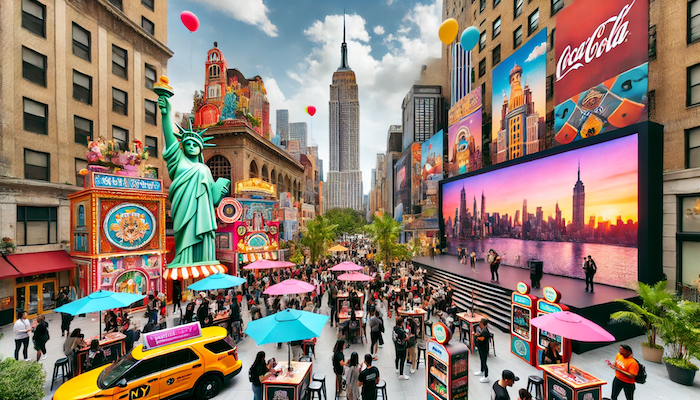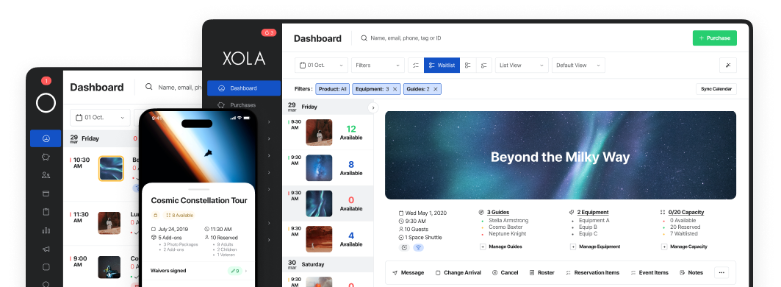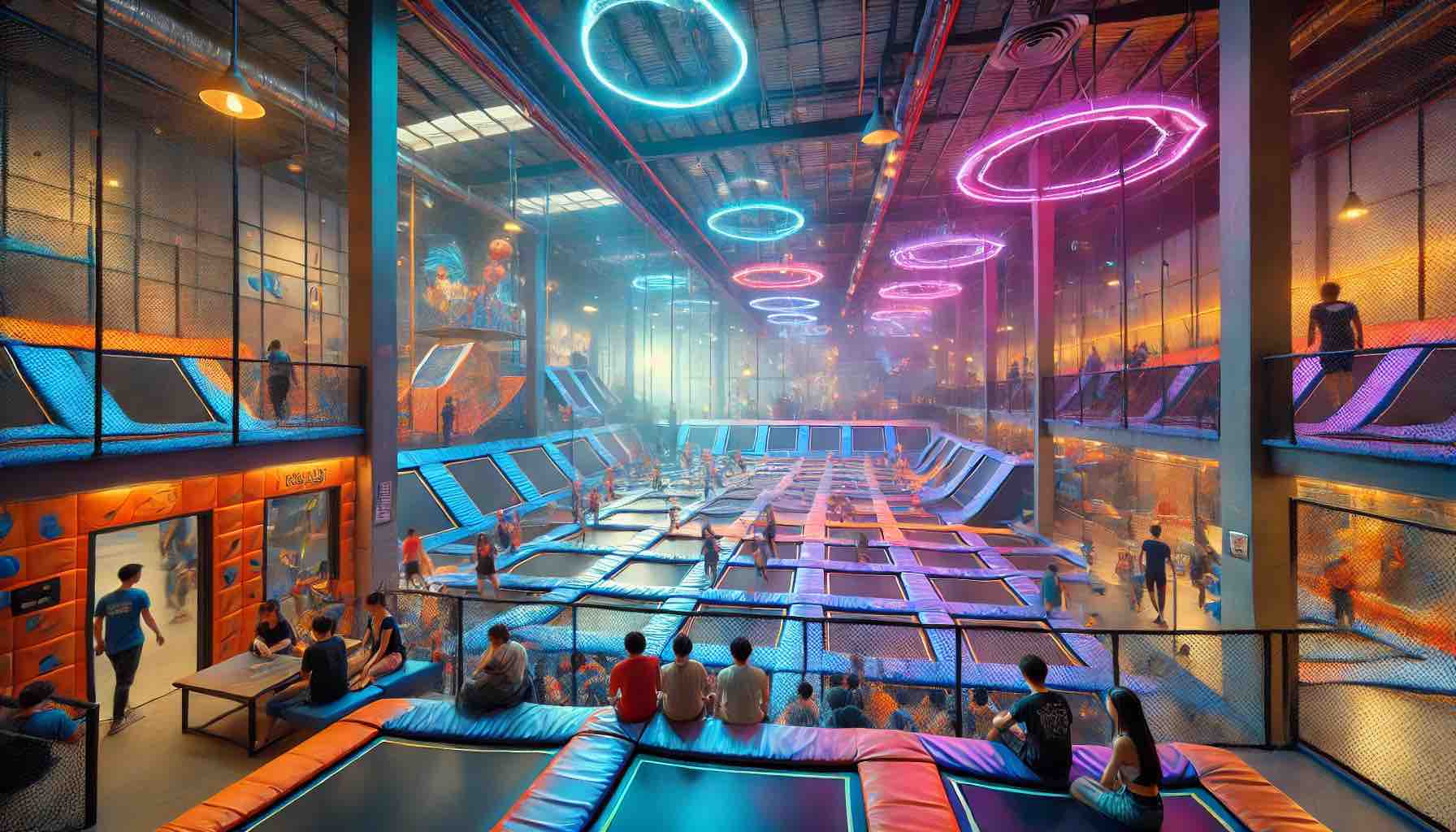
On-site activations could be the missing secret ingredient for your attraction to take off this summer. When executed well, these powerful marketing campaigns create lasting memories that drive both customer engagement and bookings.
Yet crafting an experience that resonates with visitors takes more than just a great idea. From setting clear objectives to overcoming logistical hurdles, there’s much to consider before, during, and after the event.
In this article, we’ll explain how to plan, execute, and measure the success of your on-site activation while ensuring a memorable customer experience that keeps visitors coming back. Whether new to activations or looking to optimize your current strategy, we’ve got you covered.
- What Is An On-Site Activation?
- Importance of On-Site Activation for Brands and Businesses
- How To Plan Your On-Site Activation
- Executing Your On-Site Activation
- How To Create a Memorable Customer Experience
- How To Measure the Success of Your On-Site Activation
- How To Overcome The Most Common Logistical Challenges in On-Site Activation
What Is An On-Site Activation?
An on-site activation is a live, in-person marketing event to engage potential customers. It’s an experiential marketing tactic in which a brand or attraction interacts directly with its audience in a hands-on way, making the experience more memorable. This might involve a live demonstration of a service or product or an immersive environment that engages visitors’ senses. On-site activations allow customers to experience the brand, product, or service in a way that they can’t online, giving them a tangible connection that can lead to long-term loyalty.
Importance of On-Site Activation for Brands and Businesses
Over 40% of consumers feel more loyal to brands after attending their events and experiences. Studies also show that 91% of consumers are more likely to buy a brand’s product or service after participating in an experiential marketing event.
On-site activations significantly impact ticket sales and future bookings. They don’t just capture attention. A memorable, interactive experience gives your audience something to talk about. The more exciting the activation, the more likely your visitors are to share their experience with others, whether in person or online.
These types of activations have a significant impact on driving ticket sales and future bookings. They not only capture a customer’s attention but also prompt them to spread the word to their friends and family. A well-executed on-site activation comes with the added benefit of free social media exposure and word-of-mouth marketing.
How To Plan Your On-Site Activation
If you’re new to experiential marketing, planning an on-site activation can seem daunting. Due to their interactive nature, these activations usually have a lot more moving parts than a typical online campaign. The easiest way to tackle this is to break down the planning process into five basic steps.
1. Setting Clear Objectives and Goals
If an operator’s goal is to drive ticket sales, they might offer a limited-time discount for those who participate in the activation. Yet, if they want to generate leads, they might have a registration table where visitors can sign up for more information about future events.
Do you see the difference? Each activation is set up according to the operator’s end goal.
This is why setting clear, measurable goals before planning your campaign is essential. Do you want to increase bookings, promote a new service, or get your brand in front of as many eyes as possible? While you may aim for all of these, focusing on a specific goal can help you better develop the campaign concept and measure its success.
2. Understanding Your Target Audience
The best activations are created with their target audience in mind. Take time to define who you’re trying to attract, considering factors like age, interests, behavior, and location. Are they families looking for fun activities, adventure seekers interested in nature tours, or art enthusiasts drawn to cultural experiences? Use your audience as a road map to design an experience that appeals to their specific needs and desires.
By aligning your activation with your audience’s preferences, you ensure that the experience is relevant and exciting, increasing the likelihood of future engagement and conversions.
3. Selecting the Right Location and Timing
Next are location and timing, both of which play a huge role in the campaign’s success. Consider high-traffic areas with good visibility and easy access, such as busy pedestrian zones, popular landmarks, or entrances to your attraction. Timing is also key: Ensure your activation aligns with peak visitor times or special events to maximize exposure.
For example, JetBlue strategically placed a giant ice block filled with summer accessories in the heart of New York City during winter to promote its new Palm Springs route. The high-traffic location not only captured attention but also encouraged social sharing. You might consider hosting an activation during a seasonal peak or a local festival to draw in a crowd that’s already in a celebratory mood.
4. Designing an Interactive Experience
An on-site activation should be more than a simple display—it should actively engage visitors. Interactive experiences like games, hands-on demos, and live performances can draw in attendees and give them a hands-on role in the experience.
Think about ways to gamify the campaign, such as offering exclusive prizes for participation. In the Jetblue activation mentioned above, participants were encouraged to chip away at the ice using any tools they could find to claim prizes ranging from free tickets to Palm Springs to new golf clubs. Another great example is Vancouver’s Splashdown Waterpark, which placed free tickets at the bottom of giant barrels of water, allowing people to try to grab one if they were willing to get soaked.
These kinds of experiences leave a lasting impression on guests. For example, the person who claimed a free vacation to Palm Springs by breaking into a block of ice in the middle of NYC is unlikely to forget it. That’s exactly why experiential marketing is so effective. Keep this in mind as you design your experience.
5. Selecting The Right Technology To Power Your Experience
Technology plays a pivotal role in modern activations. From booking systems to mobile apps, the right tech can enhance the interactive element of the event while ensuring the whole operation runs smoothly. For example, using booking software like Xola can help manage guest registrations, track customer data, and even offer real-time updates about the activation.
With the right technology, you can create personalized experiences — like offering tailored recommendations based on visitor preferences or sending special discounts through a mobile app. Technology makes it easier to scale your activation while providing a seamless experience for your guests.
Executing Your On-Site Activation
With a solid plan in place, the execution process becomes more effortless. Yet there are two points we want to stress here: the importance of a prepared team and consistent branding.
How To Prepare Your Team
A successful activation relies heavily on a well-prepared team. Your staff will be the front-facing members of your brand. They’re the ones handling visitor inquiries, guiding people through the experience, and maintaining the overall atmosphere. That said, they should be well aligned with the campaign’s overarching goals because that will determine their tone and approach to visitors during the experience.
Assign roles and responsibilities early, including event coordinators and customer service representatives. Then, conduct a few dry runs before the event to identify any issues that must be addressed.
Ensuring Brand Consistency Across All Elements
Your activation will hopefully attract plenty of new visitors to your attraction, many of whom will be hearing about your brand for the first time. This is why it’s important to show up authentically so that these new customers know what to expect from your brand.
Ensure the design, activities, and messaging align with your brand’s aesthetic and tone. This consistency reinforces your brand’s identity and builds trust with your audience. For instance, if your brand focuses on adventure, the activation should have an exciting, high-energy vibe, with visuals and language that resonate with that theme. However, if you’re a cultural destination, focusing on activities that immerse visitors in the local experiences would be a better fit.
How To Create a Memorable Customer Experience
One of the main differences between a static campaign and an on-site activation is the latter’s ability to create a lasting impression on customers. The goal is to create an experience that will stay with your customers for weeks to come. Memorable activations foster emotional connections with your audience, making them more likely to return and ultimately convert into paying customers.
Interactive activities and gamification
Aside from location and timing, the interactive component is what makes these campaigns most memorable. When SNCF, the French national railway company, wanted to showcase how accessible European travel could be, it didn’t just hang photos of beautiful destinations around Paris. Instead, it placed colorful doors throughout France, each leading to a different city scene—from Barcelona and Milan to Geneva, Stuttgart, and Brussels. When passersby opened the doors, they were instantly “transported” to another town.
The takeaway is that they had to physically open the door to engage with the campaign. This makes the activation more exciting, as it’s explicitly dependent on a passerby making the opening move. Take inspiration from this by designing activations that allow customers to interact with the idea of travel in a tangible way.
Leveraging social media for wider reach
The more social shares, the wider your reach. Every time someone shares their experience on platforms like Instagram or Facebook, it amplifies the buzz and attracts a new audience who may want to visit you in the future.
To ensure your event stands out online, create photo-worthy moments that make visitors want to snap a picture and share. Think bold visual displays, unexpected or interactive installations, or unique backdrops. Along with that, consider creating a branded hashtag that is exclusive to your activation. This makes it easier to track engagement and gives visitors a simple way to join the conversation, contributing to a sense of community around your event.
Live broadcasts on Instagram or Facebook can also provide real-time access to people who couldn’t attend, making them feel like part of the action. This increases the event’s reach, allowing you to capture the attention of a broader audience while also creating FOMO (fear of missing out) among those who might decide to attend future activations.
Social sharing will extend the lifespan of your activation. Post-event content, such as recap videos, customer testimonials, and user-generated content, can continue generating traction weeks after the event.
Personalization
Personalization makes everything more memorable. Whether an airline remembers frequent fliers’ meal preferences or an attraction sends a discount code on a loyal customer’s birthday, that unique, tailored attention always makes customers feel warm and fuzzy inside.
Start by gathering data in advance. This could be as simple as asking visitors to list their preferences during sign-up. For example, a museum could ask attendees which types of exhibits they’re most interested in and then send them personalized recommendations upon arrival.
You can also integrate personalization during the activation itself. If you’re running a themed event, consider creating interactive activities that reflect your visitors’ individual tastes. If you’re hosting a cooking class, allow visitors to choose ingredients or flavors that resonate with their preferences. If it’s a historical site, offer different guided tours based on visitors’ interests.
Providing value through entertainment
The right entertainment can make an activation unforgettable. Take Spotify’s activation at SXSW, for example. It featured live performances from popular artists and interactive spaces that kept the energy high. By blending entertainment with brand engagement, Spotify created a memorable experience that drew people in and kept them around for hours. This boosted the likelihood of social media shares, further extending the brand’s reach.
How To Measure the Success of Your On-Site Activation
- Attendance numbers: Indicates the level of exposure. To calculate, track the total number of visitors who attend your event and compare it to your pre-event goals or expectations.
- Engagement rate: Measures how captivating your activation is for visitors. Calculate by dividing the number of interactions (such as participation in activities or social media shares) by the total number of attendees.
- Social media mentions and shares: These show your event’s reach online and how people talk about your activation. Use social media tools to track mentions of your event hashtag or brand name across platforms.
- Sales or bookings: This demonstrates whether your activation successfully drove purchases or reservations. Track bookings made during or after the event and compare them to typical sales periods to gauge impact.
- Lead generation: Helps build a pipeline of potential customers for future bookings. Count the number of leads collected during the event (like email sign-ups) and track their conversion rates.
- Customer satisfaction: Reflects the quality of the experience and helps you improve future activations. Measure through post-event surveys, as well as sentiment analysis on social media.
- Return on investment (ROI): Indicates the financial success of your activation. Calculate ROI using the formula: ROI = (Revenue from Activation – Cost of Activation) / Cost of Activation.
- Media coverage: Measures how much your event has been covered by the media, expanding your reach. Track earned media coverage and estimate its value by comparing it to paid media costs.
How To Overcome The Most Common Logistical Challenges in On-Site Activation
Let’s conclude this piece by discussing three of the most common logistical challenges you may face during your on-site activation and how to overcome them.
1. Venue setup and coordination: Ensuring the physical space is ready and adequately organized can be time-consuming, especially if unexpected issues with equipment, power, or space arise. Before the event, conduct a detailed venue walkthrough, confirm equipment requirements, and have a backup plan for technical difficulties. Proper communication with vendors and venue managers is key to avoiding last-minute issues.
2. Staffing and training issues: Untrained staff can lead to poor customer experiences and confusion. Make sure you have sufficient staff to cover all areas, including customer interaction, tech support, and event management. Train your team on the activation’s goals well before the event day.
3. Weather and environmental factors: Weather can disrupt outdoor events and negatively affect attendance. Always have contingency plans in place, such as an indoor venue option. Make sure all outdoor elements are weather-proof, and communicate any potential changes with visitors in advance.
***
A successful on-site activation goes beyond attracting visitors. It creates meaningful experiences that leave a lasting impression. With thorough planning, attractions can optimize their activations to reach a broad audience and generate a lot of buzz. With the right strategy, your campaign will be a hit even after it ends.
